Last week brisket prices momentarily descended from the stratosphere; when a local supermarket chain ran them at $2.99 per pound for the week. We were still long on Choice ground beef in our freezer. Such ground beef is made by grinding 3 or 4 whole eye of round per one packer style brisket. Still, I wanted to make something from that little brisket buying opportunity. The corned beef and Pastrami making advice that I see offered in some of my Facebook groups always seems to be a lot more complicated and expensive than it needs to be. Another complaint often seen in those FB groups is that their finished corned beef or pastrami is much too salty. Consequently, this post is about comparatively easily making great pastrami.
Traditionally, pastrami is made using the boneless ventral section of the beef short-plate, a cut commonly known as the beef navel. Cured, smoked, cooked and sliced beef navels are analogous to traditional pork bacon. However, due to the navel’s high beef fat content a lot of modern pastrami makers have gravitated towards the leaner brisket cut. I also prefer to eat less of the more saturated (harder than pork fat) beef fat; so use boneless brisket to produce corned beef and pastrami as well. Interestingly, brisket fat is the softest/least saturated fat found in a beef carcass.
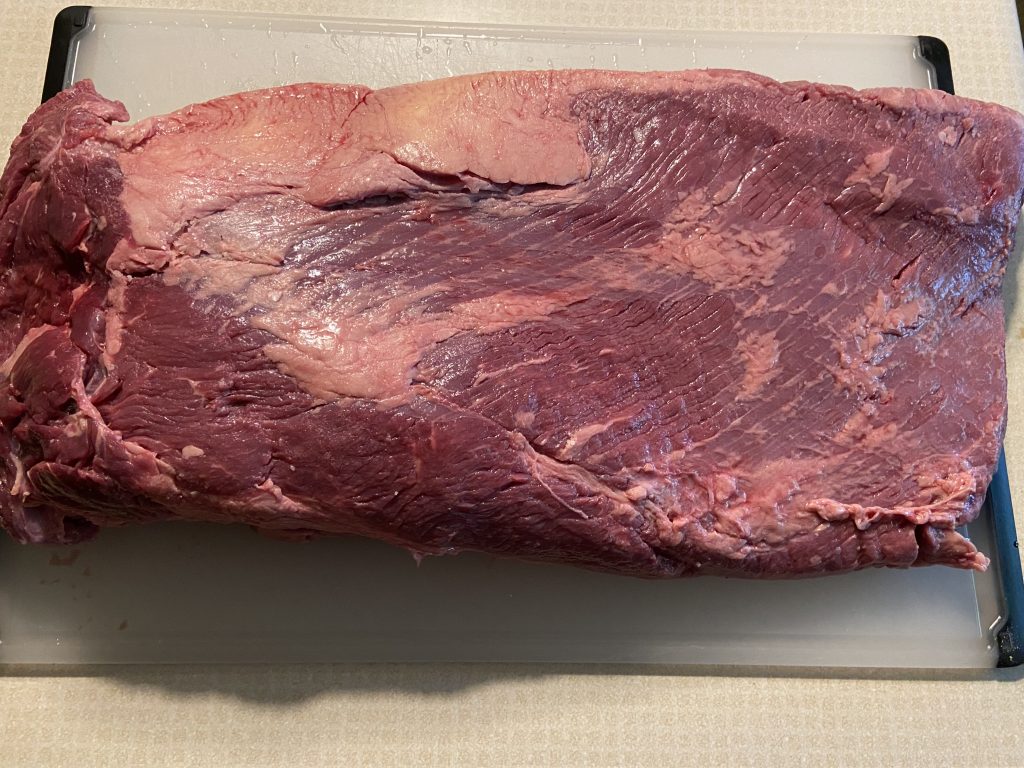
I selected a thick muscled Choice brisket that had a comparatively thin external fat layer. This one weighed 16.38 pounds and cost $48.98.
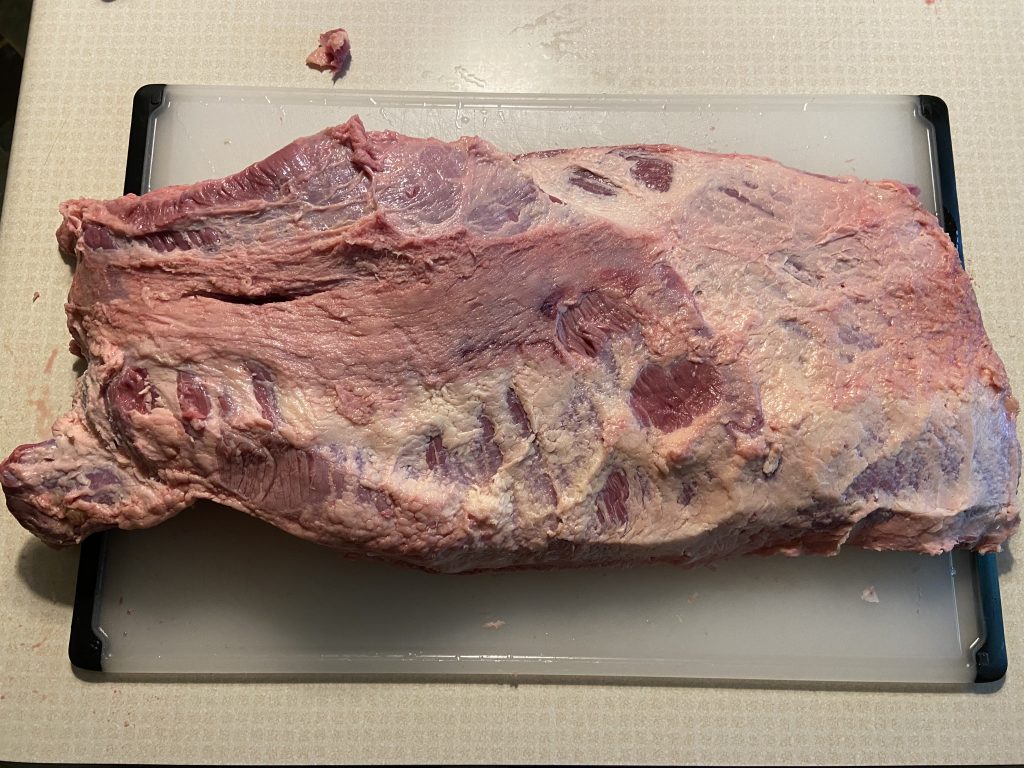
Close fat trimming resulted in 3.88 pounds of weight loss. So, this 12.5 pounds of trimmed brisket came in at $3.92 per pound ($48.98 divided by 12.5 equals $3.92).
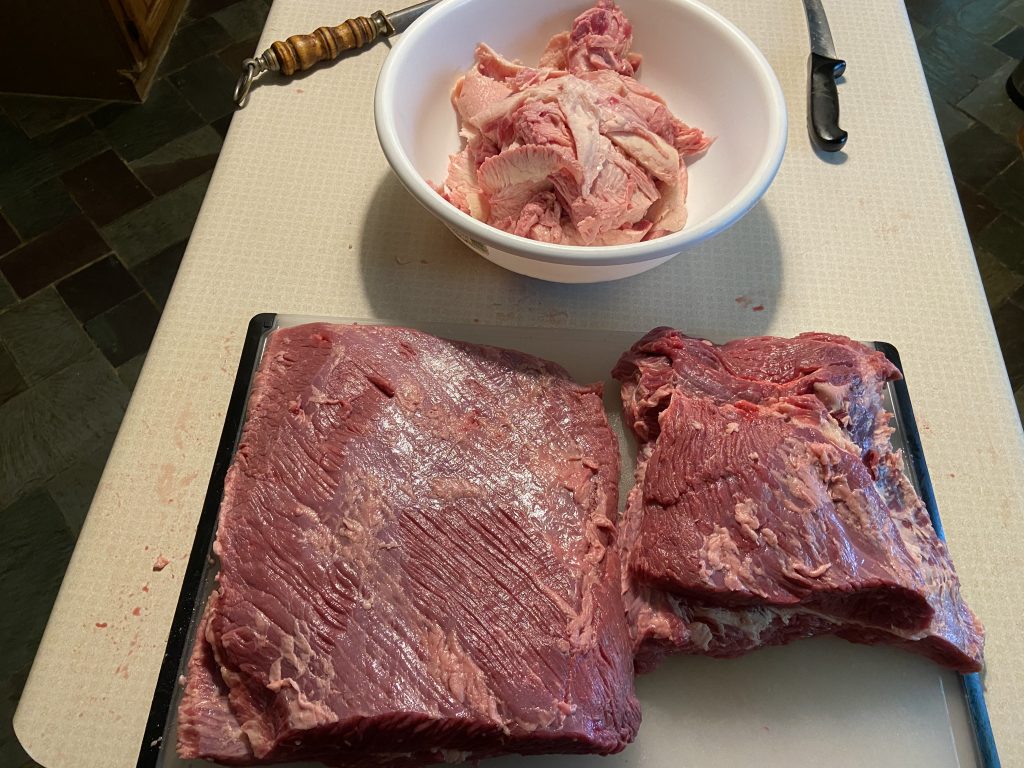
Trimmed flat cut , point cut and bowl containing fat loss. I did not save the fat because I didn’t have any other meat projects going on at the time and fat can oxidize fairly easily in freezer storage.
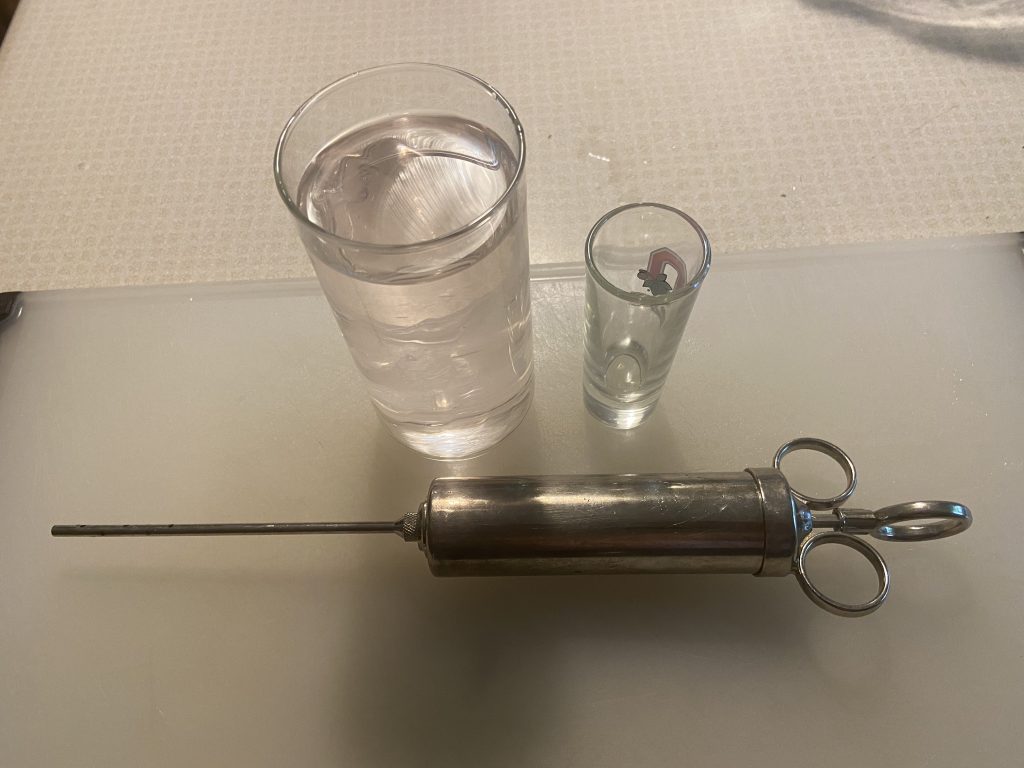
This is where a non-mainstream processing practice is employed: Calculate the amount of water soluble dry ingredients that it takes to make 12.5 pounds (the weight of my trimmed brisket) of sausage. Formulation adjustment is simple to do on a ratio basis. Dissolve the ingredients into as much water as you think that you can get the brisket of retain, then spray pump the brisket cuts from several different entry points. Pumping immediately gets ingredients into where they can react with all the meat. And therefore, not just react with exterior surface of meat that could be covered with fat and/or muscle sheaths. Both meat coverings slow brine absorption.
I used 5 cups (2.5 pounds) of water, 4 tsp of sodium phosphate, 6.5 TBSP purified flake salt, 2.5 level tsp curing salt #1, .33 tsp sodium erythorbate (cure accelerator; which also decreases residual nitrite), and 2 TBSP dextrose. The pump brine weight was 3 pounds. 3 pounds divided by 12.5 pounds of brisket equals a 24% brine pick-up. That is not at all high because when making wet-pack corned beef using commercial multi-stitch pumps we aimed for a 35% brine pick-up. Sodium phosphate increases finished product moisture retention and both sodium phosphate and sodium nitrite help inhibit fat oxidation.
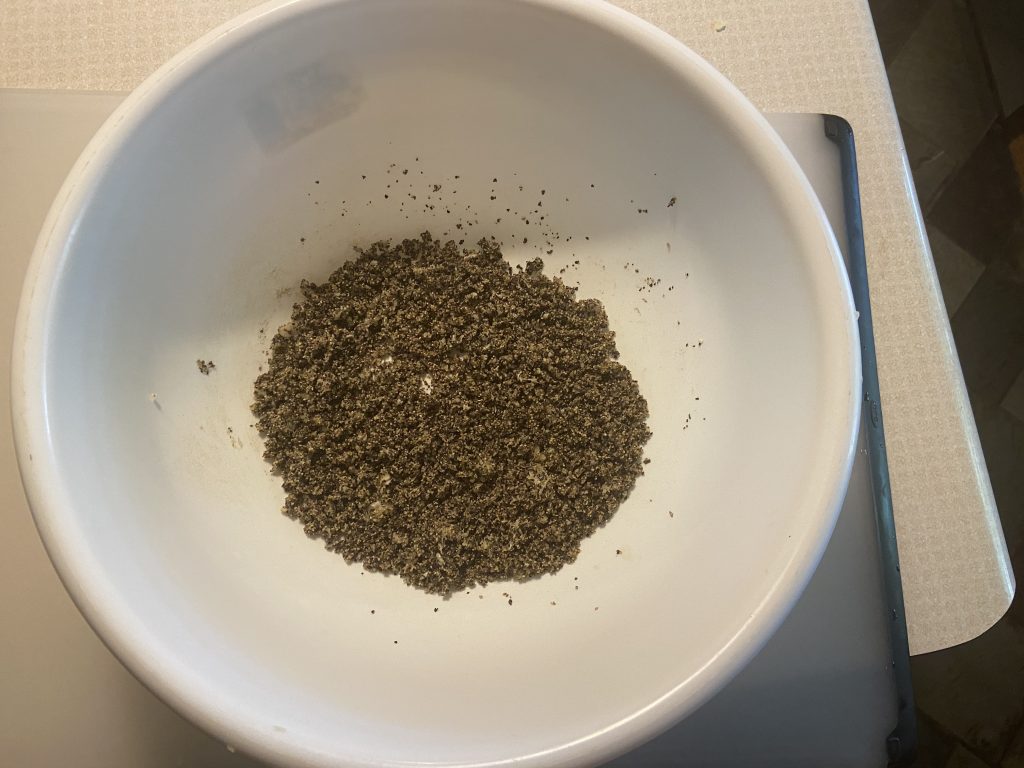
Here is a picture of crushed garlic and coarse ground pepper; for coating brisket cut exteriors. I used about a bulb (not clove) and a half of garlic and 4 TBPS of coarse ground black pepper. For sausage making I normally pasteurize dry spices in boiling water, but did not in this application because water can only be introduced into the meat by pumping and because garlic is a known anti-microbial.
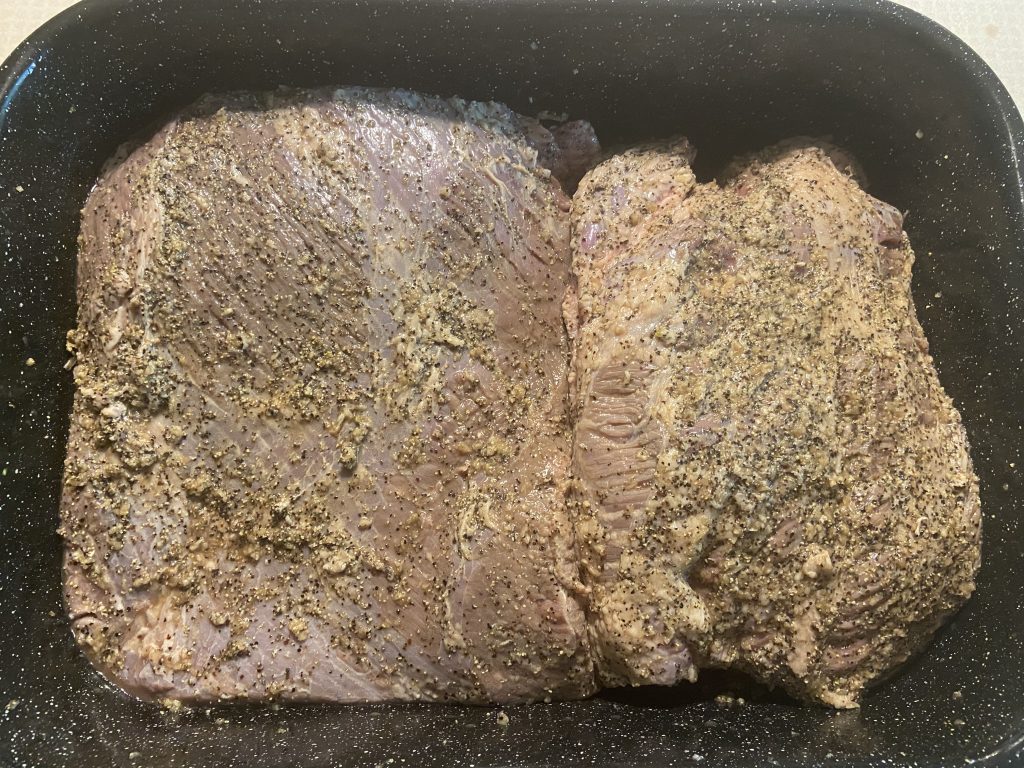
Pumped and rubbed point and flat cut brisket. Note that cure rapidly turned the red meat grayish. Cover the meat container with plastic and allow time for the pumped-in ingredients to equalize throughout the meat, about a day and a half. Flip the brisket cuts a time or two during the refrigerated holding period. The holding period also provides enough time for some black pepper and garlic flavor absorption into the meat.
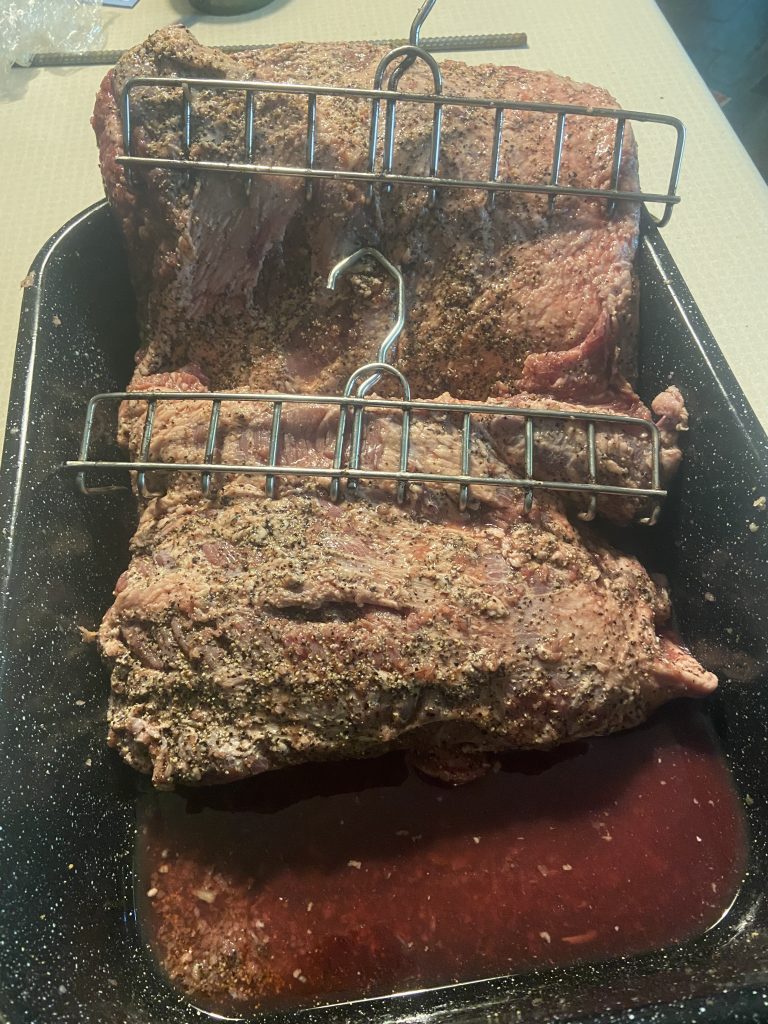
I had a couple stainless steel bacon hangers on-hand so they were used to help get more even smoke on the pastrami.
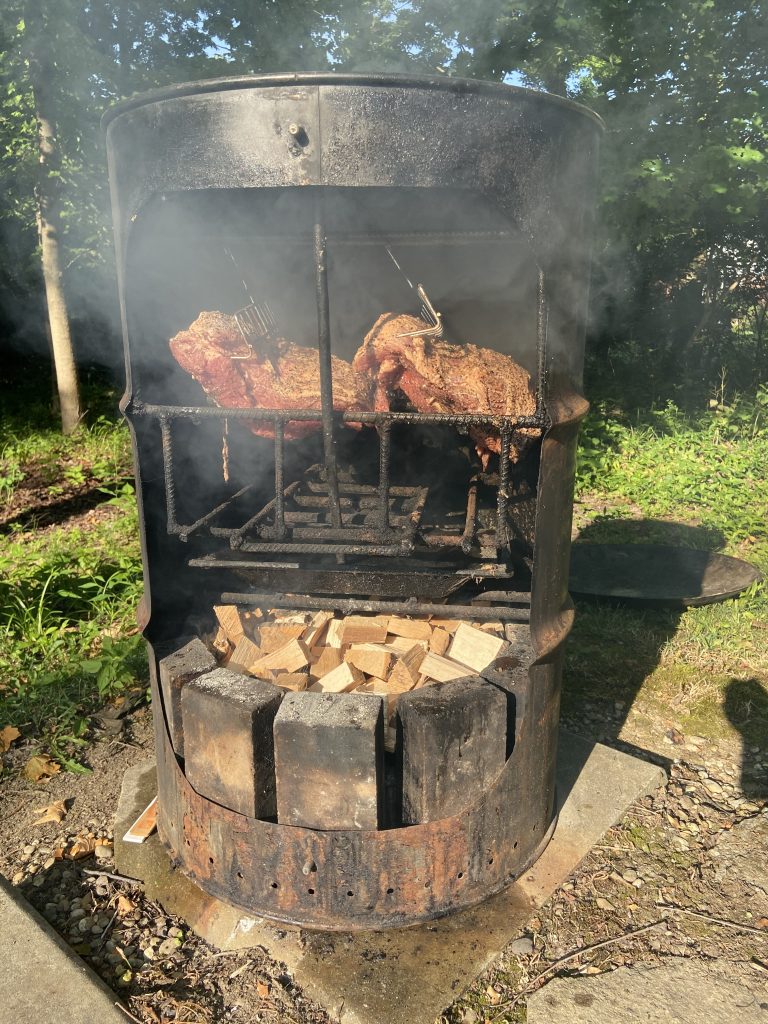
Smoke phase start-up. Cast iron water boil-off pan is filled, two partially lit charcoal chimneys of briquettes were spread out on the fire grate and hardwood chunks were spread on top of the charcoal.
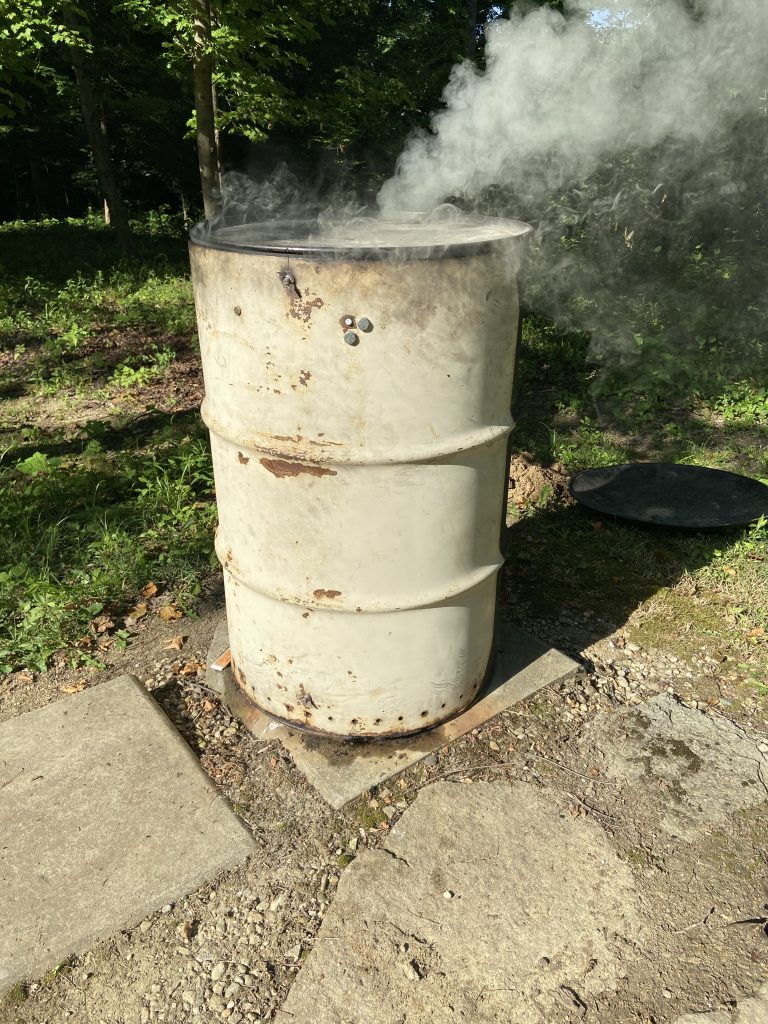
Smoker shroud was put in place and heavy smoke was soon generating. The water pan was refilled, down the fill tube, after about 2 hours.
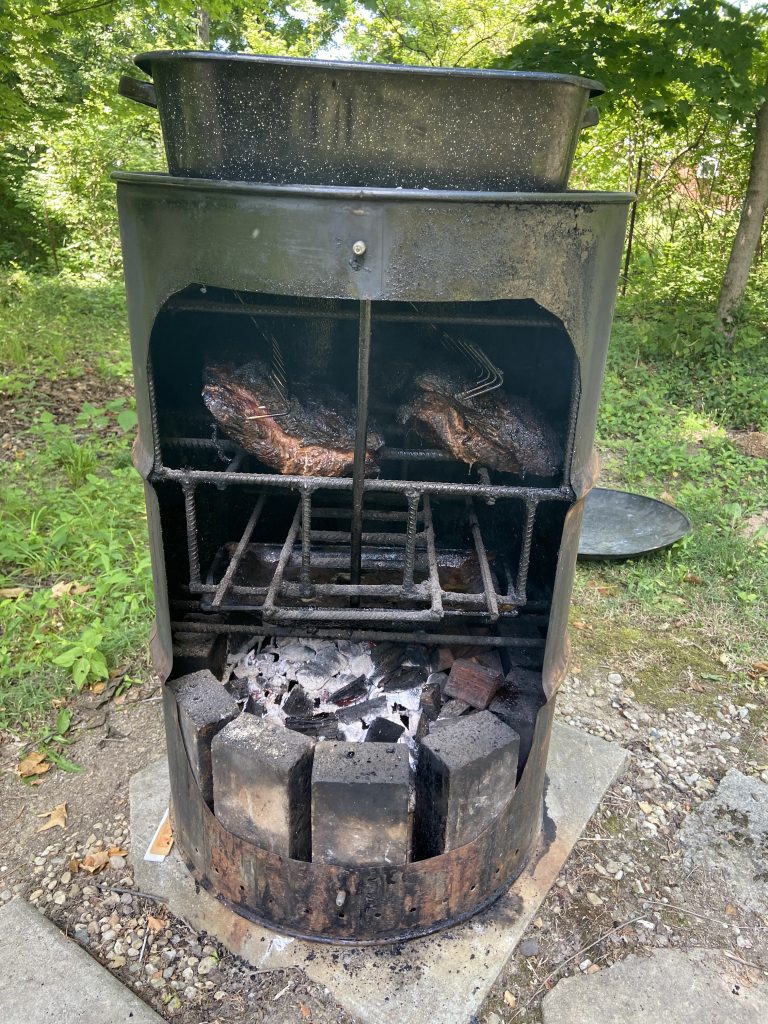
Smoke-cooker was opened and pastrami was removed after 3 and a half hours. Internal meat temps averaged 165F at that time. Meat temperature was into its evaporative-cooling stall.
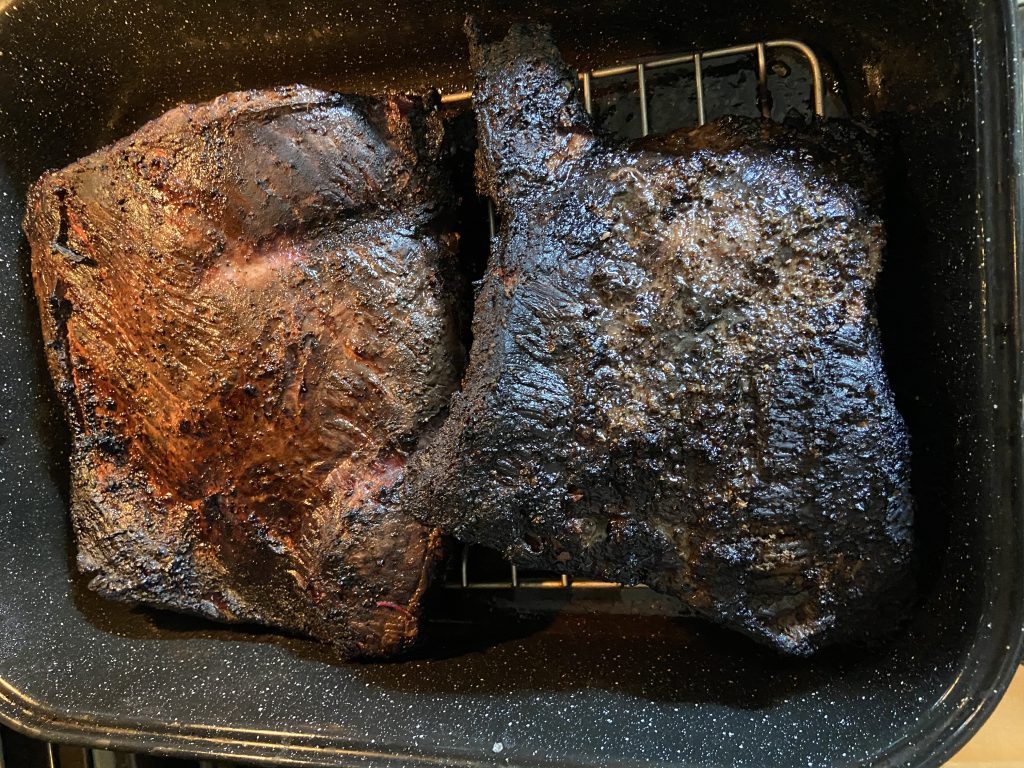
Meat, straight out of the smoker, was placed on a cooking rack in a large rectangular roasting pan. Lid was put on and the roaster went into a 275F oven to finish off via steam cooking. No liquid was added to the roaster.
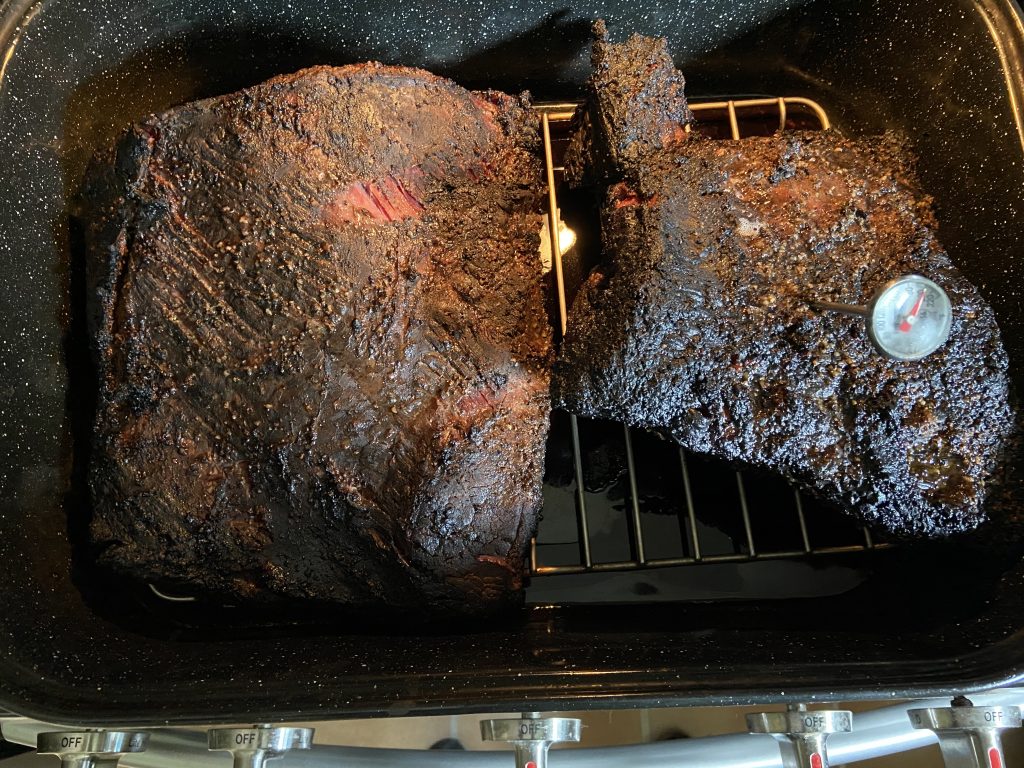
After an hour and a half of oven cooking the roasts averaged 195F internal.
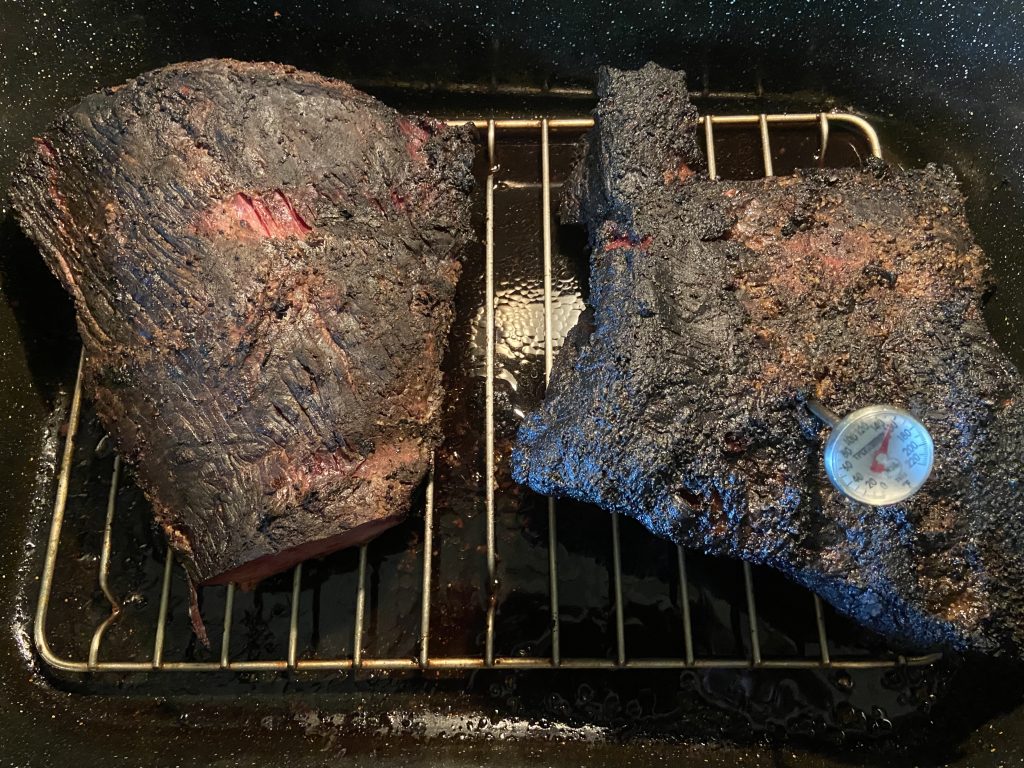
The color darkened and roast surfaces began to look dryer during a short open-air, room temperature cooling period. Notice that a good bit of pastrami was immediately eaten. The still open roaster was then place in refrigeration in order to quickly chill the finished pastrami.
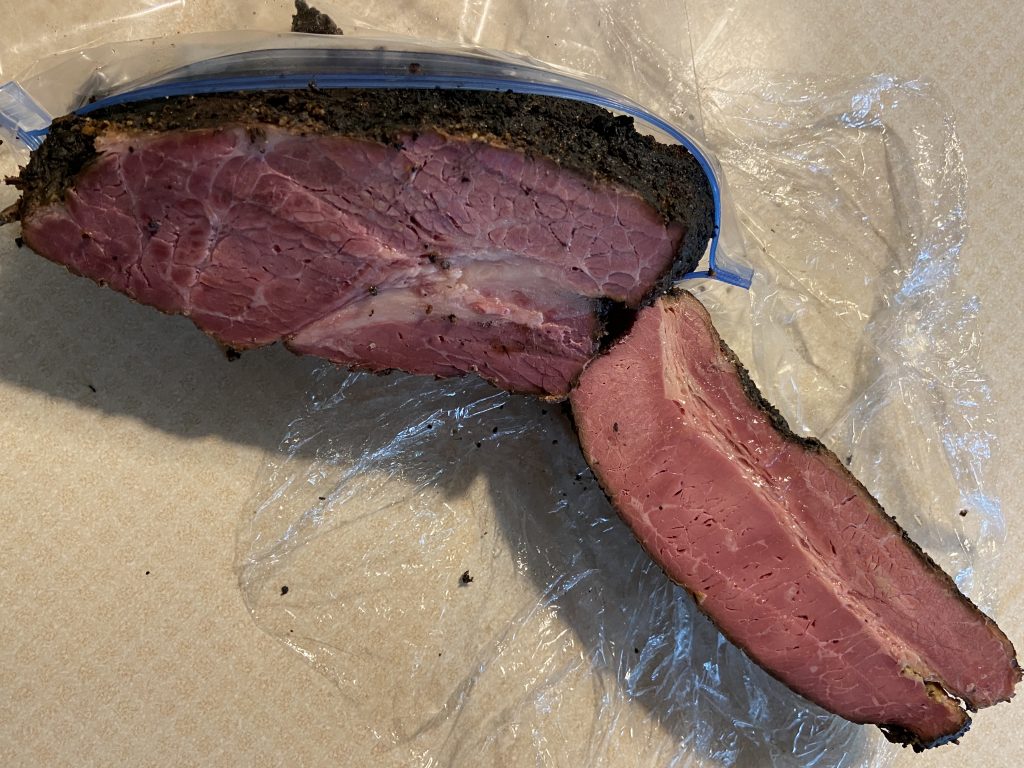
Here are pieces of both point cut and flat cut brisket pastrami. A big hunk of each was kept in the refrigerator for short-term eating and another big piece of each type was sealed up well and placed into freezer storage.
